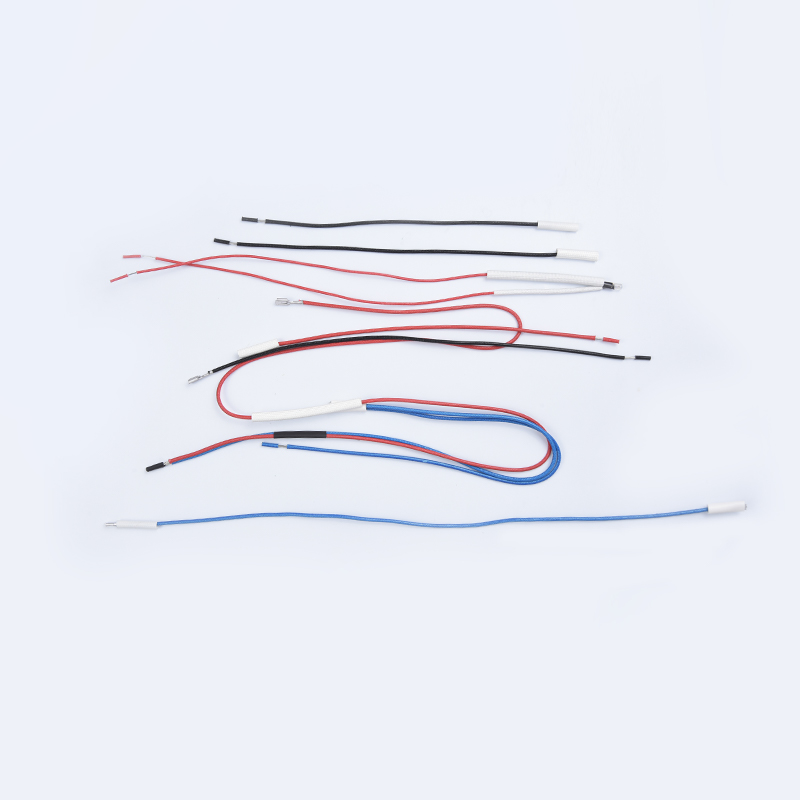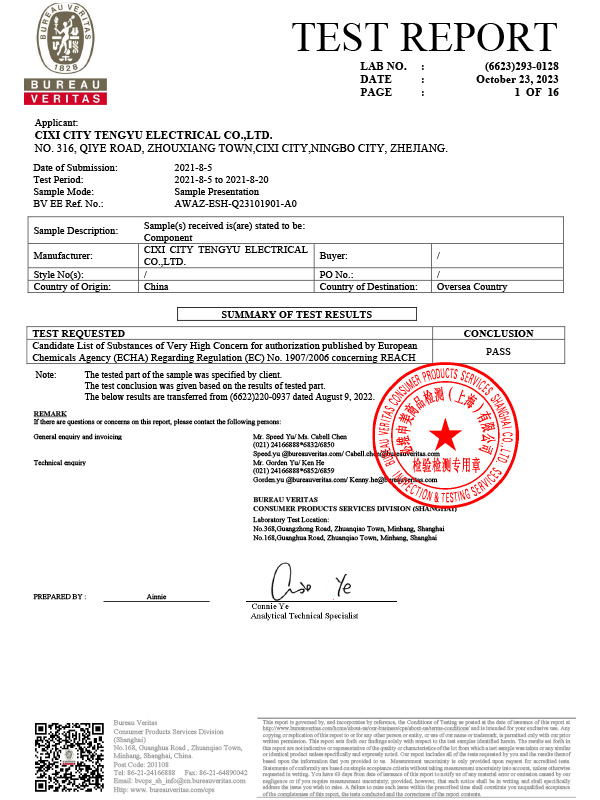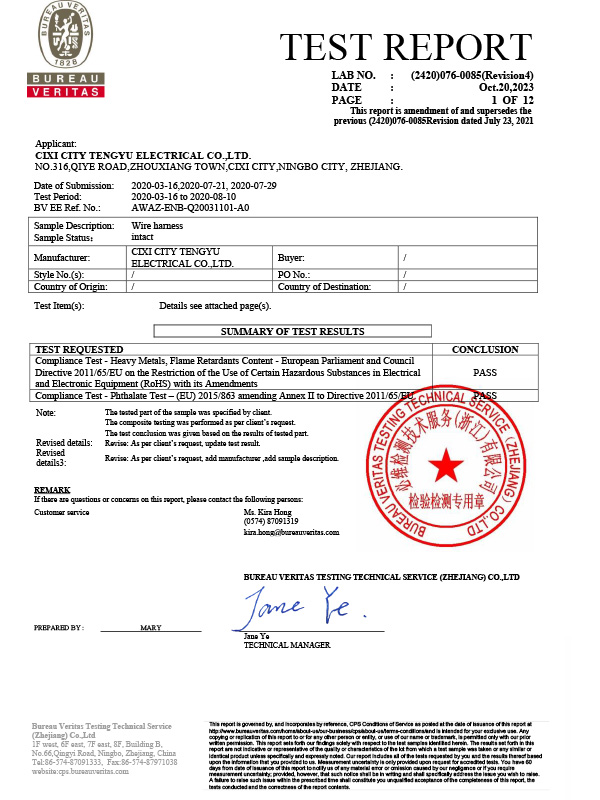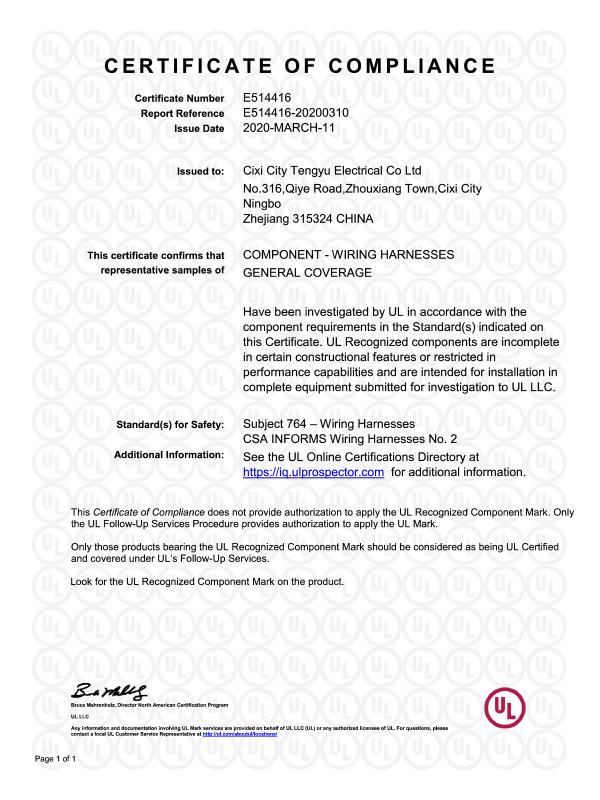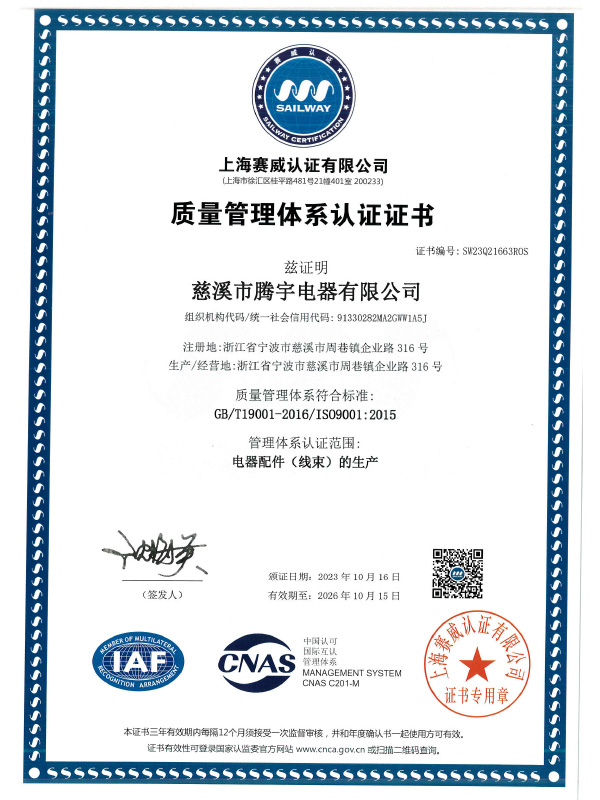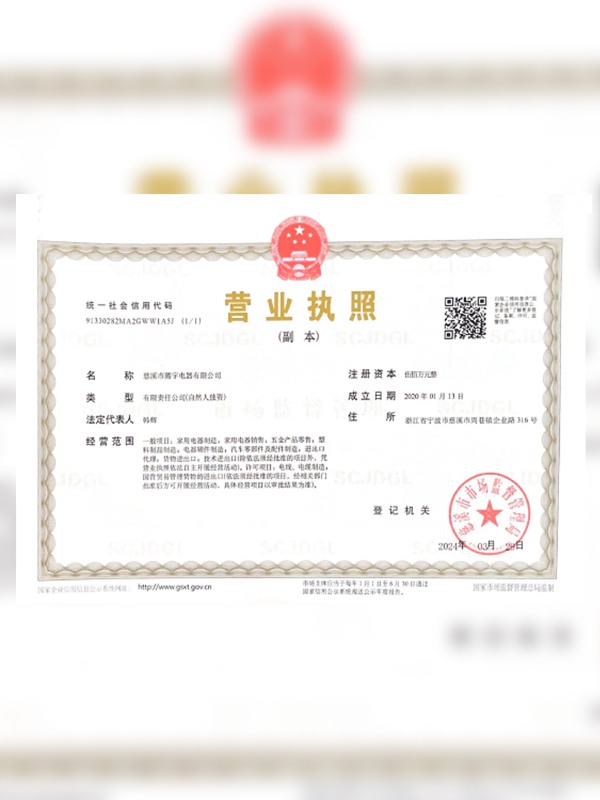What is the function of an electric heater wiring harness?
The electric heater wiring harness is the core of an electric heater's internal electrical system, connecting the power supply to key components such as the heating element, thermostat, and sensor. Through wires, connectors, and insulation materials, it ensures stable transmission of current and signals, enabling the heater to function properly. The electric heater wiring harness ensures accurate and efficient transmission of electrical energy to the heating element, enabling the heater to heat up quickly and maintain the set temperature through the temperature control system.
Power Supply to Heating Element Connection: The electric heater wiring harness connects the power supply to the heater's heating element through wires, connectors, and connectors, ensuring timely transmission of power to the element, enabling it to start quickly and provide the required heat. A good power connection is crucial to the heater's heating speed and efficiency.
Thermostat to Temperature Sensor Connection: The electric heater wiring harness connects the thermostat to the heating element and temperature sensor, ensuring the heater can automatically start, stop, or adjust heating power according to the set temperature, thereby maintaining a constant water or air temperature. A stable temperature control system effectively prevents damage to the heating element due to overheating, ensuring the safety and long-term stable operation of the device.
Signal Transmission and Device Coordination: Multiple components within an electric heater require signal transmission via the electric heater wiring harness to ensure coordinated operation between systems. The electric heater wiring harness ensures stable signal transmission, enabling the heating and control systems to respond promptly and preventing equipment failures.
Efficient Current Transmission: The heating element of an electric heater requires rapid conversion of current into heat. The wire material used in the electric heater wiring harness determines the efficiency of this current transmission. High-quality wire effectively reduces electrical resistance and energy loss, ensuring efficient transmission of electrical energy to the heating element, improving heating efficiency and response speed.
Equipment Safety: The insulation material in the electric heater wiring harness prevents hazards such as leakage, short circuits, and overheating. High-quality insulation prevents current leakage, protecting users from electric shock and ensuring that the device is protected from safety hazards such as malfunction or fire during extended use.
Improving Heating Efficiency: A well-designed electric heater wiring harness reduces current loss, ensures efficient power transmission, and improves heating efficiency. Improper electric heater wiring harness design or the use of low-quality materials can result in inefficient current transmission, extending heating time and reducing energy utilization. Using high-quality electric heater wiring harnesses can significantly improve heating efficiency and reduce energy waste.
Extending Equipment Life: High-quality electric heater wiring harness design and materials not only improve equipment efficiency but also effectively reduce equipment failures. By ensuring stable current transmission and an effective temperature control system, the electric heater wiring harness protects the heating element from risks such as overheating, thereby extending the life of the electric heater.
What are the main design requirements for electric heater wiring harnesses?
To ensure the reliability and safety of electric heater wiring harnesses, the following key requirements should be considered during design:
High-temperature resistance: Electric heaters generate high temperatures during operation, so the wiring harness material must possess excellent high-temperature resistance. In high-temperature environments, insufficiently high-temperature resistance can cause wires to melt, insulation to degrade, and even lead to fires and other safety hazards. High-quality high-temperature-resistant materials, such as silicone and PVC, maintain stable electrical performance in high-temperature environments, preventing damage caused by excessive temperatures and ensuring the normal operation and safety of the equipment.
Good electrical insulation: Electric heater wiring harnesses require high-quality insulation to prevent current leakage or short circuits. The wiring harness's insulation protects the wires and their surroundings, ensuring that current does not come into contact with objects or conductors that should not be contacted, creating a dangerous situation. High-quality insulating materials, such as PE and PVC, effectively prevent current leakage and are resistant to aging and UV rays, ensuring unaffected electrical performance during extended operation and minimizing safety risks.
Corrosion Resistance: Electric heaters often operate in humid or high-temperature environments, requiring excellent corrosion resistance for the wiring harness's conductors and connectors. Corrosion can affect the conductor's conductivity, increase resistance to current transmission, and even cause electrical faults such as short circuits. Therefore, choosing corrosion-resistant materials, such as tinned copper, silver-plated copper, or stainless steel connectors, effectively prevents corrosion caused by environmental factors and ensures long-term stable and safe operation of the wiring harness. Good corrosion resistance not only extends the wiring harness's lifespan but also maintains efficient current transmission.
Durability and Aging Resistance: Electric heaters operate in high-temperature, high-frequency environments over extended periods of time. Wiring harness materials may gradually age due to thermal stress, mechanical friction, and environmental fluctuations. Therefore, wiring harnesses must be made of age- and wear-resistant materials to ensure they maintain performance over time. Using age-resistant wire and insulation materials can significantly extend the life of the wiring harness, reduce aging-related failures or safety issues, and ensure the long-term stability and reliability of the electric heater.
How do electric heater wiring harnesses ensure heating efficiency and safety?
The wiring harness plays a vital role in ensuring efficient heating and safe operation of the equipment. The following are several key factors that contribute to its effectiveness and safety:
Stable current transmission: The wiring harness's primary function is to stably transmit power to the heating element, ensuring unimpeded current flow. High-quality wiring harnesses, using high-quality wire materials, minimize resistance and thus reduce current loss during transmission. Stable current transmission ensures that the heating element receives the required power and maintains steady heating, avoiding uneven heating or prolonged heating time, thereby improving heating efficiency.
Reduced current loss: The design and material of the wiring harness directly impact current transmission efficiency. High-quality wiring harnesses minimize current loss by optimizing wire gauge and material. Efficient current transmission not only increases heating speed but also reduces energy consumption. For example, using highly conductive materials (such as copper) can reduce the resistance of electric current, minimize energy waste, ensure more electrical energy is efficiently converted into heat, and accelerate the heating process.
Effective Temperature Control: The wiring harness is tightly connected to the electric heater's temperature control system, ensuring that the thermostat accurately adjusts the current supply according to the set temperature, thereby controlling the operating temperature of the heating element. Stable transmission within the wiring harness ensures that the thermostat reliably receives signals and precisely adjusts the heating process, avoiding overheating or temperature fluctuations. This precise temperature control system not only improves heating efficiency but also prevents damage or unsafe conditions caused by excessively high or low temperatures.
Preventing Electrical Failure: The insulation of the wiring harness is crucial to the safety of the electric heater. High-quality insulation effectively prevents current leakage or short circuits, thereby preventing electrical shock and electrical fires. The terminals and connectors in the wiring harness must be strong and durable to ensure stable current transmission without loosening or poor contact. A robust wiring harness design reduces the risk of overload and ensures safe operation of the electric heater even under high loads.
Preventing Overheating and Overload: Electric heaters generate significant heat when operating at high power, making the wiring harness's high-temperature resistance particularly important. High-quality wiring harnesses made of high-temperature-resistant materials can withstand high operating temperatures and prevent melting or damage to the insulation. This prevents overheating-related current instability and equipment damage, thereby improving overall equipment safety.
Reducing Electrical Interference: A well-designed wiring harness can also effectively reduce noise and interference in the electrical system, ensuring smooth operation of the heater's electronic control system, temperature control system, and other components. Reducing electrical interference helps stabilize the heater's operation, improve heating efficiency, and prevent external electrical factors from impacting equipment safety and performance.




 中文简体
中文简体